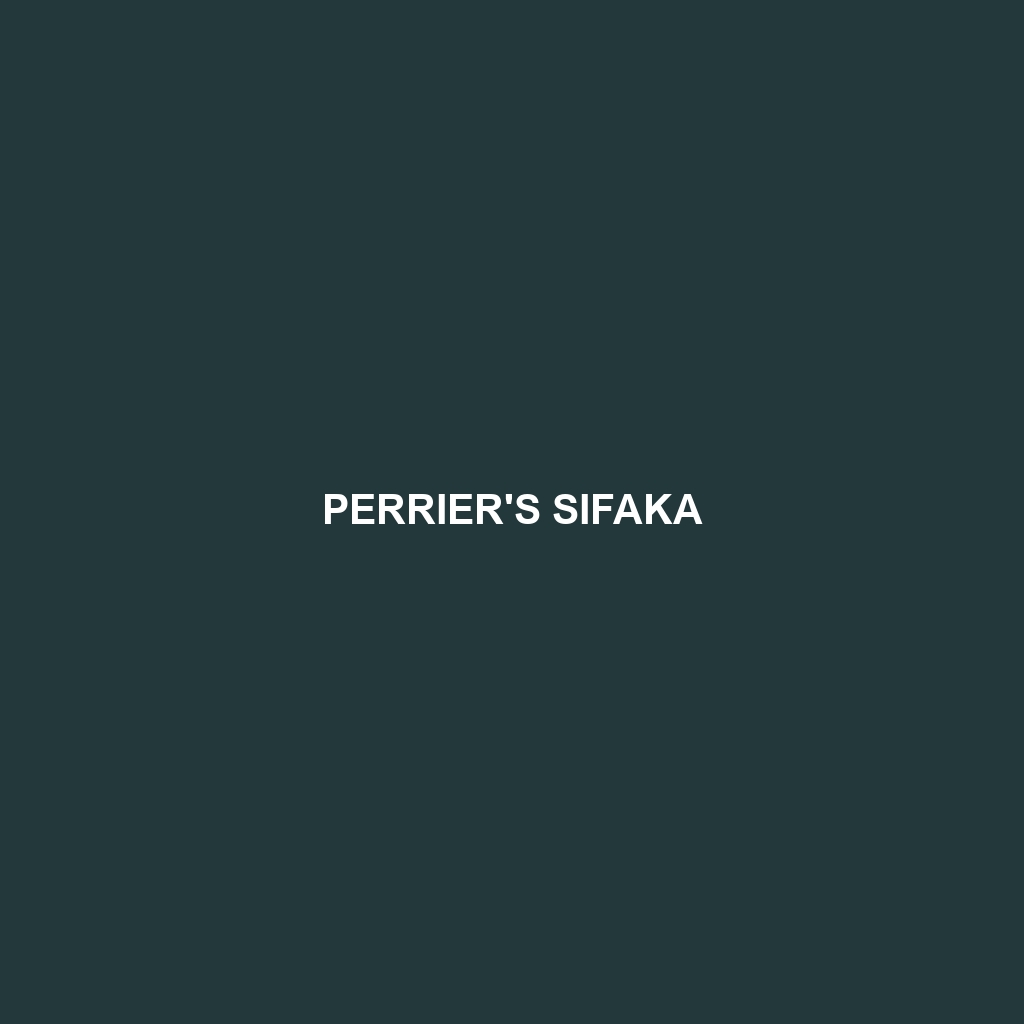Perrier’s Sifaka: An Overview
Common Name: Perrier’s Sifaka
Scientific Name: Propithecus perrieri
Habitat
Perrier’s Sifaka is primarily found in the lush rainforests of Madagascar, specifically in the northeastern regions of the island. These unique primates thrive in dense, humid forests that provide ample tree cover and a diverse array of flora, crucial for their survival. The species is often associated with primary forests rich in species such as Dalbergia and Diospyros, which serve as both habitat and food sources.
Physical Characteristics
Perrier’s Sifaka is a medium-sized lemur, measuring approximately 2 to 2.5 feet in length, excluding the tail. This species is distinguished by its striking coloration, which features a mix of creamy white and rich black fur. The contrasting colors make them recognizable and a subject of interest for wildlife enthusiasts. Their long, powerful limbs and tails assist in their unique mode of locomotion—leaping between trees with agility.
Behavior
Perrier’s Sifaka exhibits a complex social structure, living in small groups typically composed of 2 to 10 individuals. These groups are known for their vocalizations, which include a variety of calls used for communication. They are diurnal and spend most of their time foraging in the trees. Perrier’s Sifakas are known for their remarkable ability to leap horizontally up to 10 meters, an adaptation to their arboreal lifestyle.
Diet
The diet of Perrier’s Sifaka consists primarily of leaves, fruits, and flowers. They show particular preference for young leaves from various tree species, which are easier to digest and provide essential nutrients. Their feeding habits play a significant role in seed dispersal, contributing to the health of their forest habitat.
Reproduction
Perrier’s Sifaka typically breeds once a year, with the mating season occurring between September and November. After a gestation period of approximately 135 days, females give birth to a single offspring who remains dependent on its mother for several months. Notably, the young are carried on their mother’s belly until they are strong enough to cling to her back.
Conservation Status
Currently, Perrier’s Sifaka is classified as **endangered** due to habitat loss from deforestation and human encroachment. Conservation efforts are critical to preserve their remaining habitats and mitigate threats posed by illegal logging and agricultural expansion.
Interesting Facts
One fascinating aspect of Perrier’s Sifaka is their unique method of locomotion—during ground movement, they adopt an upright posture, leaping and bounding on two legs. This behavior, often referred to as “dancing,” is not just a whimsical sight but also a practical adaptation for navigating the forest floor quickly.
Role in Ecosystem
Perrier’s Sifaka plays a vital role in the rainforest ecosystem of Madagascar. As herbivores, they help in shaping the forest structure by feeding on various plant species, which promotes biodiversity. Additionally, their role in seed dispersal aids in the regeneration of the forest, making them integral to maintaining ecological balance.
